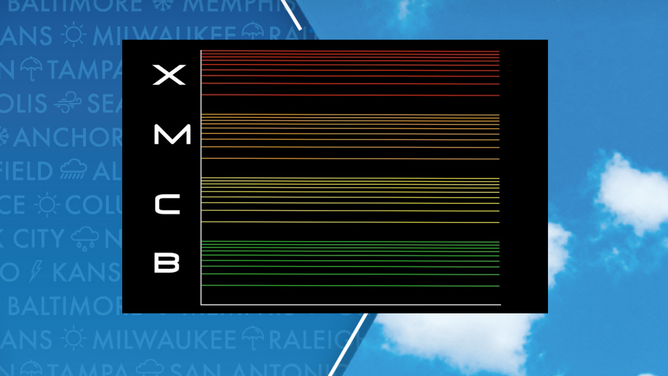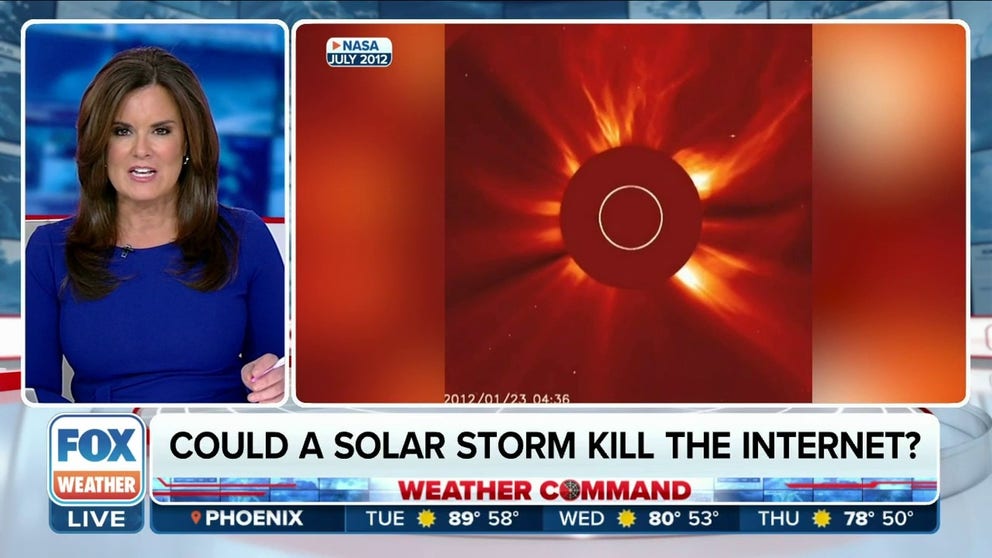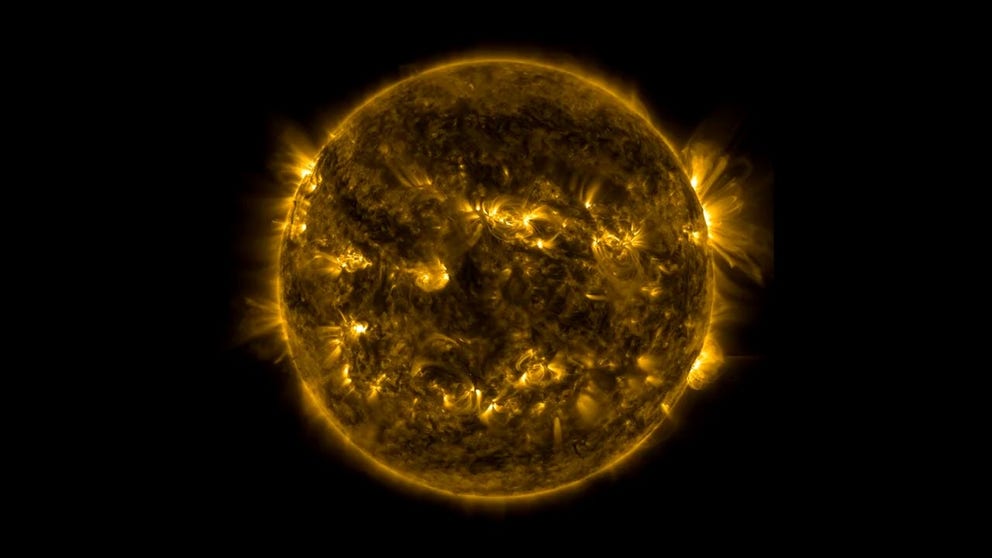Sun has explosive 24 hours of powerful solar flares
The X6.3 flare was the largest event of Solar Cycle 25, which is expected to peak in 2024. A significant coronal mass ejection, which is often referred to as a CME, can lead to some of the most brilliant displays of the Northern Lights, but those did not accompany the recent flares.
Could a solar superstorm kill the internet?
Professor Peter Becker of George Mason University discusses the real threats of strong solar flares.
An active solar cycle that space experts warned was on the horizon in 2024 became evident during the past week with several X-class solar flares that were witnessed coming from the Sun.
NOAA’s Space Weather Prediction Center reported the first occurred around 6:07 p.m. EST on Wednesday, followed by a similar-sized event about seven hours later. It wasn’t until Thursday evening that the X6.3 solar flare occurred, which was considered the largest burst of radiation since at least 2017.
NOAA’s GOES-16 spacecraft, dawned with sophisticated ultraviolet technology, had a front-row view of the solar activity and produced imagery of the plasma jumping about from the Sun’s photosphere.
Significant solar flares have the potential to interfere with radio communications and navigation equipment, but widespread issues were not reported following the events.
None of the flares were accompanied by coronal mass ejections, which can produce stunning displays of Northern Lights and lead to problems with communication networks, satellites and power grids.
Space experts classify flares according to strength, with the smallest being known as B-class, followed by C, M and finally, X-class.
Within each category, numbers are assigned to events that help determine its scale. This means an X-class flare of 1.7 is on the low end of a strong event, with the 6.3 being significantly stronger.

Solar flare guide
(NASA)
The strongest solar flare in recorded history is believed to have been an X45, which occurred in 2003, but most X-class events rank between 1 and 9.
Solar activity has been on an uptick associated with the peak of Solar Cycle 25, which is expected to happen later this year.
A solar cycle is a sequence the Sun’s magnetic field goes through every 11 years, where the field flips. As the magnetic field changes, experts have long warned about fluctuations in the amount of solar activity and sunspots on the surface of the star.
NOAA PREDICTS STRONGER PEAK OF SOLAR ACTIVITY IN 2024 THAN ORIGINALLY ANTICIPATED
Even with the predictions of more active sunspots, the strength of the cycle is still expected to be generally weaker than average.
NOAA has dubbed the sunspot responsible for the most recent solar activity as Active Region 3590.
The area appears to remain unsettled, which could indicate that further solar flares and CMEs are possible.
NASA video shows solar activity over a week
Video from NASA's Solar Dynamics Observatory shows activity during a week ending on Sept. 17. NASA said space weather included 9 M-Class flares, 22 CMEs and 1 geomagnetic storm.

